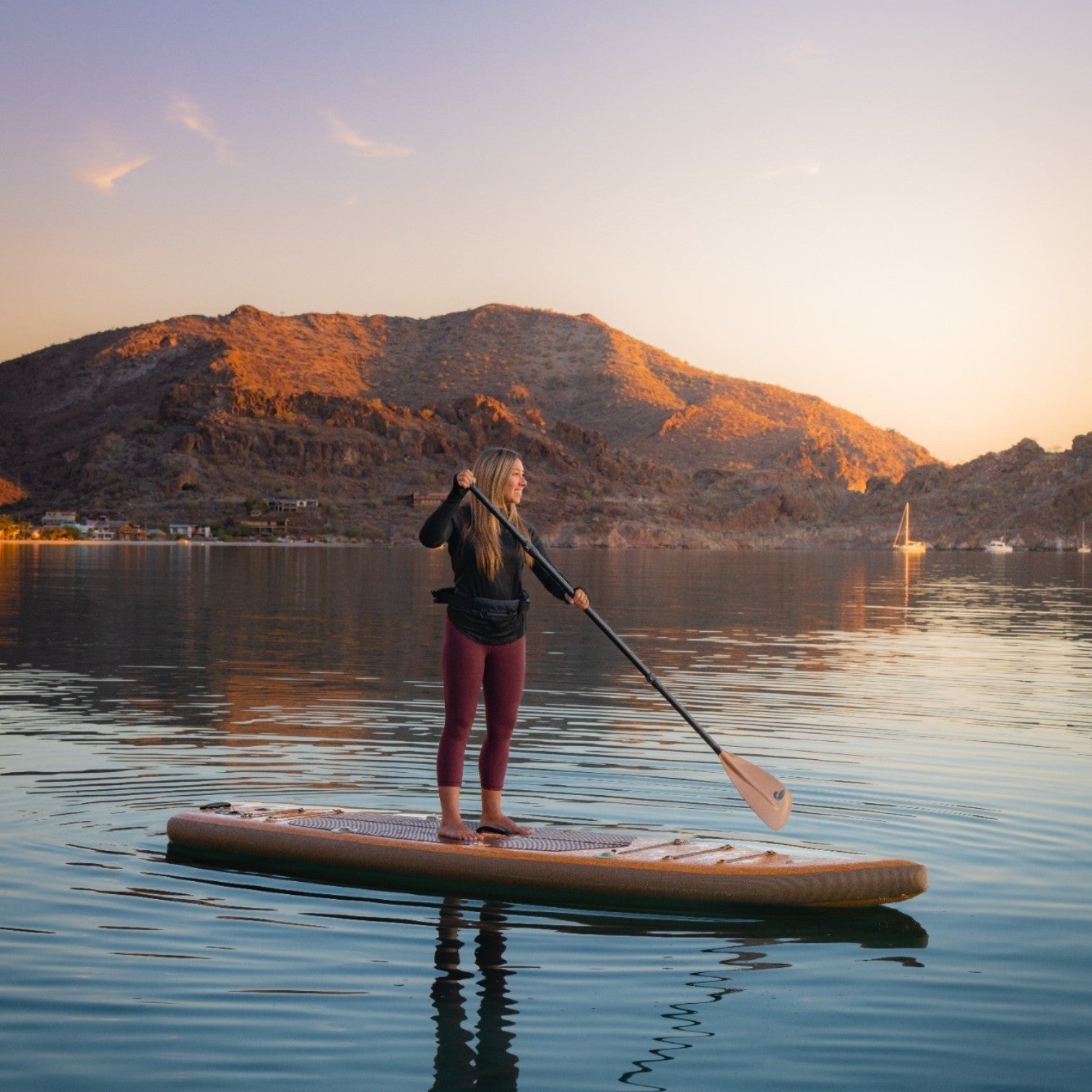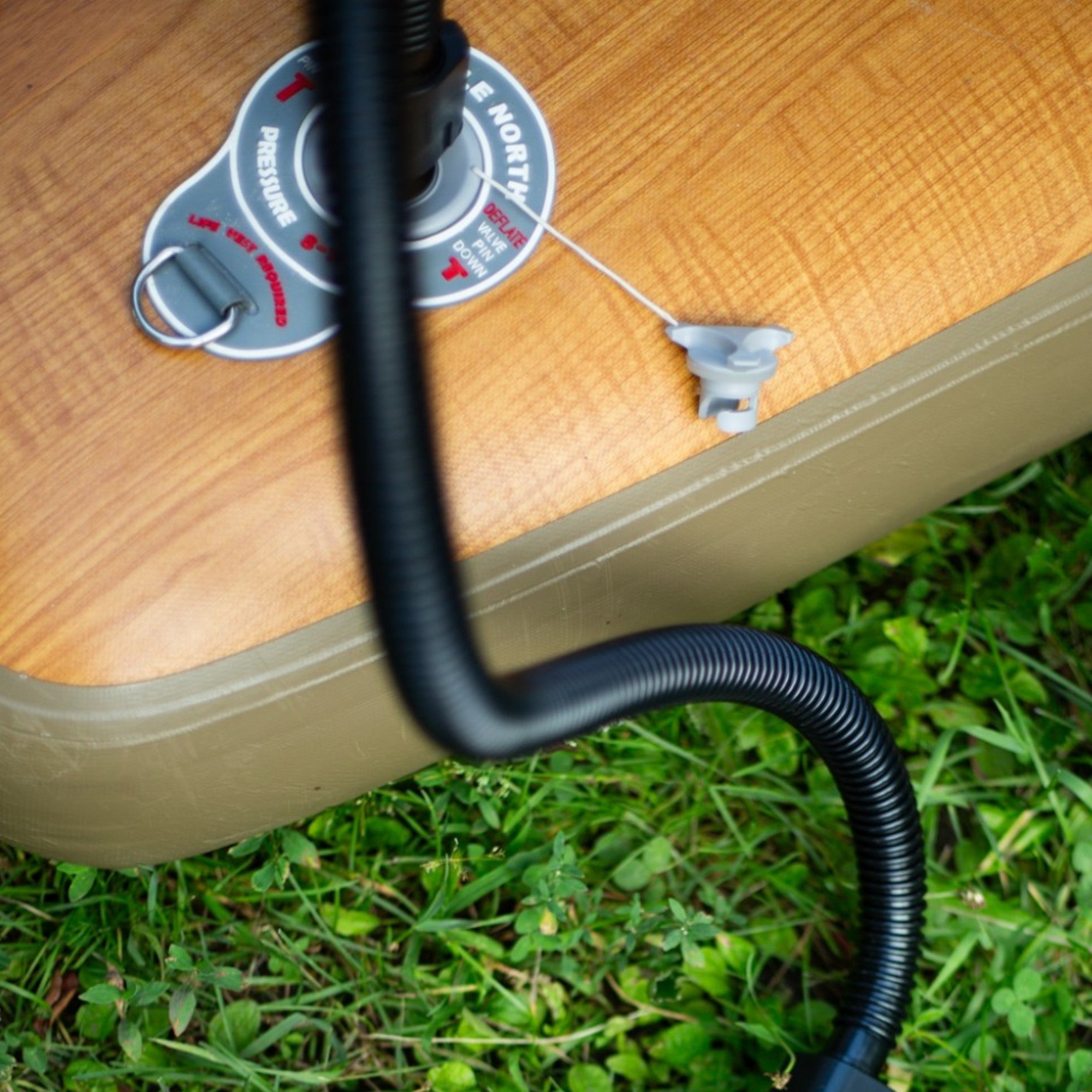It’s a common question we hear at Paddle North: “Is paddle boarding hard?” The honest answer? Not at all.
Stand-up paddle boarding (SUP) is one of the most beginner-friendly water sports out there. Because it’s a low impact sport, it’s accessible for all ages. With the right board, calm conditions, and a little guidance, most people are up and paddling within their first session.
If you're curious but hesitant, you’re not alone. Let’s break down why paddle boarding is easier than you might think, and how to set yourself up for success.
Why Paddle Boarding Is Beginner-Friendly
Unlike sports that require high speeds or steep learning curves, paddle boarding has a low-barrier to entry. Whether you're gliding across a calm lake or slowly floating near a shoreline, it’s easy to find your footing.
Here’s why learning to paddle board is simple:
- Stable Boards Help You Balance – Modern paddle boards, like ours from Paddle North, are designed with stability in mind. All of our paddle boards make it easy to stay upright. Even on your first try.
- You Control the Pace – There are no waves to catch or a specific speed to hit. Paddle boarding is self-paced and accessible.
- You Don’t Even Have to Stand at First – Many paddlers start by kneeling or sitting. You can ease into standing when you’re ready.
Tips for a Smooth Start
To make your introduction to paddle boarding as smooth as possible, here are some tips:
-
Choose the Right Paddle Board
Wider, Stable boards are ideal for beginners. Check out any of our paddle boards (inflatable or rigid) for a smooth first experience. -
Pick Calm Conditions
Early mornings on a calm lake or bay are perfect. Avoid windy days or choppy water when starting out. -
Start Kneeling
Begin on your knees to find your center of balance, then gradually rise to a standing position when you feel steady. Like riding a bike, it is easier to stand while the paddle board has forward momentum. Get a few paddle strokes in and then stand up while the board is moving. -
Look Ahead, Not Down
Keep your eyes on the horizon—not your feet—to help maintain balance. -
Use Proper Paddle Technique
Your paddle should be about 6–8 inches taller than you (when standing). Hold it with one hand on the top and the other halfway down the shaft. Follow these tips on how to size your SUP paddle correctly.
Health Benefits of Paddle Boarding
Beyond being fun, paddle boarding offers a variety of health benefits:
- Full-Body Workout:
Engages your core, arms, legs, and back muscles, providing a comprehensive workout, without the joint impact of higher intensity workouts. - Improved Balance and Coordination:
Regular paddle board improves your stability and coordination skills. - Cardiovascular Health:
Paddling increases your heart rate, promoting heart health. -
Mental Well-being:
Being on the water can reduce stress and promote relaxation.
Whether you're looking to get fit or find a new way to unwind, paddle board has something to offer.
Why Paddle North?
At Paddle North, we're committed to making your paddle boarding experience enjoyable and accessible. Our boards caters to all skill levels, ensuring you find the perfect fit for your needs. With quality designs and a passion for the water, we're here to support your SUP journey.
So, is paddle boarding hard? Not at all. With the right gear, a bit of guidance, and a willingness to try, you'll find yourself gliding across the water in no time. Get outside and embrace the adventure, get a workout, and discover the joy of paddle boarding with Paddle North.




Leave a comment
All comments are moderated before being published.
This site is protected by hCaptcha and the hCaptcha Privacy Policy and Terms of Service apply.